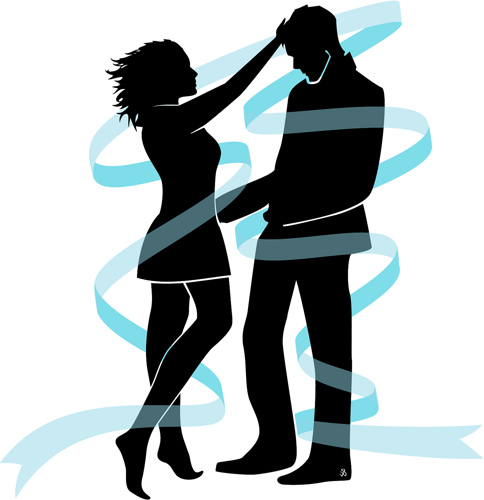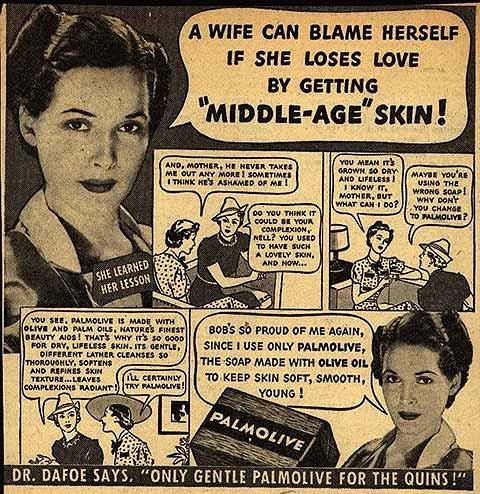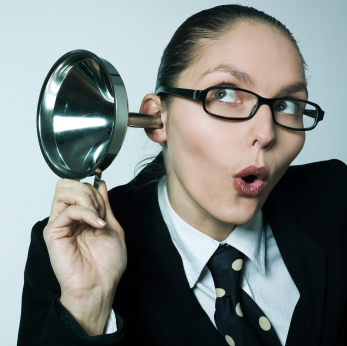Talk health to me, baby…on ePatient Conference, Seduce Health and menopause
When was the last time talking health was considered sexy? Or creative? Or passionate? Well, if you are a long time reader of Flashfree, you know that I don’t mince words and I don’t attempt to turn menopause or aging into a steamy soap opera (unless we’re talking steamy as in night sweats and hot flashes). However, I do try to approach the ‘what you need to know’ with humor, integrity and candor and stay away from fear mongering. That’s why I was excited to meet a lot of people last week who not only shared my passion for healthcare but more importantly, for conversing about it.
If you have not heard of ePatient Conference, you may want to check it out next year. It’s two solid days of engagement, exchange and networking. But if you take away the buzzwords, you are left with an opportunity to put creativity back into the way that healthcare is approached, managed and talked about.
Among the many incredible experiences — from hearing Seth Godin’s keynote to witnessing the VGo Robot take photos of the audience — none were quite as inspiring as meeting Google’s Chief Health Strategist, Roni Zeiger. And while Roni is undoubtedly doing some very cool things with Search and Trends over at the Google Headquarters, I was most impressed when he started telling me about Seduce Health. Along with co-founder Alexandra Drane, Roni started the site “to get a public conversation started about how we can reframe how we ask people to change their behavior, to live healthier and therefore happier lives. To move from fear and lecturing to passion and dreams, hope and beauty.”
It’s not a bad goal. But is it achievable?
It’s fairly clear that health messaging often falls on deaf ears and that sometimes, the individuals, experts and organizations leading the charge are the ones who are also misleading the very public they seek to educate. Take overweight and obesity for example, problems affecting an estimated two out of three American adults and at least 17% of all children. Obesity is the elephant in the room, acknowledged but rarely discussed without fear or lecturing, under- or misestimated and frequently inadequately addressed. Menopause is also a good example, a natural transition in a woman’s life that has been turned into the disease of the 21st century, medicalized by many health practitioners, manufacturers and the media, and mongered to the point where we have a burgeoning Menopause Industrial Complex based on greed, profit, fear and self-loathing rather than empathy and education.
When it comes to women’s health, I do believe that can be sensuous and passionate, not dry and stale. Along these lines, I recently wrote that:
taking control doesn’t have to mean that the aging process is denied, stopped or obliterated, medicalized or industrialized. Rather, it means taking charge to feel better, more vibrant, healthier so that you/we/I can live the best life I can live while we are alive. For me personally, that doesn’t mean hormone replacement or botox or lipo; it means trying to make more healthier decisions, control or address my symptoms with evidence-based alternatives and accept the transition as a natural part of my journey. I consider this time an opportunity for shifting priorities and interests that open all sorts of possibilities. And, I want to take the experience out of the closet and foster discussion and sharing. Ultimately, I’d like the see a more natural course driven by women themselves, as opposed to societal expectations and stigmatization of the aging process and as opposed to the Menopause Industrial Complex.
I’ve said it before and I’ll say it again. Let’s crowdsource menopause. Let’s make it a goal to seduce our peers and practitioners into talking about it, embracing it and not trying to change it into something its not: a four letter word. Aging can be a hopeful, positive experience.
What do you say? You in?
p.s. If you are curious about ePatient Conference, organizer Keven Kruse has graciously posted presenter slides here.
Read MoreWednesday Bubble: Anti Anti-Aging, Pro Great Glow. Guest post by D. A. Wolf
You know when you read something and you say “wow,” wish I had written this? This is how I felt when I read this piece on aging (or anti-aging) by freelance writer and journalist D. A. Wolf. And although I had never spoken to her before, I reached out on Twitter and asked her if I could run it on Flashfree.
We’re bursting some big bubbles today, the type that convince us that aging is a four-letter word. And it’s never a better time to remind ourselves that this line of thinking couldn’t be further than the truth.
Enjoy!
I thought it was the usual – a skinnied-down version of a new magazine in a world gone virtual. Daring, I thought – attempting any sort of print publication in this age of the Internet. So I set aside the bills from the mailbox, and sat down instead to page through.
I hadn’t recognized the woman on the cover. Only after reading the table of contents did I glance back and scrutinize the face, discovering an 80s icon in the plumped, smoothed, and limpid likeness.
I won’t say who it was; I will say I was disappointed. The person gazing back at me seemed pleasant enough, somewhere in that tinkered-with range of 40 to 60, yet she spun no stories and held only the slightest resemblance to the woman I once watched and listened to.
I skimmed the lead article, and thumbed through the rest.
Hmm, I thought. A lot of sponsored copy.
Then I realized it was nearly all sponsored: lasik from my local clinic, Botox from the dermatologist in the nearby office park, full-fledged nips and tucks or, mini-lifts if you prefer.
A vibrant smile?
Not a problem. There were befores and afters from at least a half dozen providers of dental implants or pearly veneers.
Concierge-assisted recoveries?
Many to choose from.
There were case studies on European creams, on heart healthy diets, on the advantages of the now-accepting-new-members senior spa and health club. There were pictures and paragraphs on every conceivable cosmetic procedure.
I paged back to see the name of the publisher and more about the contributing writers. This thinly veiled advertising circular was little more than a targeted set of “senior services,” all of which were spouting the advantages of anti-aging this, anti-aging that.
Which is when it hit me, which isn’t to say it hasn’t occurred to me previously.
Anti-aging? Wouldn’t that mean death?
Shouldn’t we be pro keeping our eyes and ears open and making reasoned choices, including rejecting the concept that we must always appear young? Why is every sign of aging “bad?”
- Why are my joyful laugh lines to be expunged?
- Why must my abdomen reject the ripples that show I carried babies?
- Why is aging – especially as a woman – so sorrowful that we feel “less” than worthy of love, worthy of jobs, worthy as people?
Why had this lovely 80s star allowed her individuality to be cosmetically and digitally altered?
I may not like the loosening of skin in all its inevitable places, but isn’t that natural and not without its own beauty? Is it impossible for us to appreciate the entirety of the package, rather than pointing to the shiniest wrapping and saying that is all that matters? Can’t we focus on health and its obvious advantages?
Of course I’m aware of ageist prejudice.
Of course I’m aware of my lessening marketability.
But doesn’t accepting the prevailing “wisdom” of fighting aging tooth and nail mean condoning that we are valueless as we mature?
I try to eat well, I walk when I can, I paint my gray, and I love to dress in a feminine fashion. I put on my mascara and gloss, and God knows I adore my shoes. I won’t say “never” to the possibility of a tweak someday, but nor will I apologize for my age, and with it – my acquired wisdom, my sexual maturity, and my stubborn vitality.
And I won’t be told that “aging” is anything other than natural.
Maybe it’s time we shifted our thinking, we the women of 40 and 50 and 60 and older – and rather than fighting our years, fight for them. So give me Meryl and give me Helen. Let’s toot our handsome horns and flaunt our fabulous fuller figures, knowing that great glow is more than show, and not the entitlement of a single demographic.
About the author…
D. A. Wolf is a freelance writer, journalist, marketer, trainer, single parent, art collector, polyglot, traveler, and devotee of exquisite footwear & French lingerie. She believes we are all brimming with glorious contradictions, and capable of living fully – with whatever life dishes out, and whatever we can make of it. You can find a lot more of D. A. and her brilliant self at her blog, Daily Plate of Crazy.
Read More
Wednesday Bubble: Exercise and Sexual Health – How you move affects how you groove. Guest post by Alexandra Williams, MA
Every now and then I like to shake things up in this space, which is why I asked fitness professional writer, speaker and radio host Alexandra Williams (aka @alexandrafunfit on Twitter) to lend me her expertise for a day. What I didn’t expect, however, was for her to rock the sexual health world with the revelation that exercise, i.e. how you move, affects how you groove. Frankly, if all it takes is exercise, you will find me adding an extra hour or so a day at the gym!
Show Alexandra some love. She’s witty and has been putting the fun back into fitness for for some time now…
Image: http://vectorportal.com
Sexual health is defined by Mosby’s Medical Dictionary. as “a capacity to enjoy and control sexual behavior without fear, shame or guilt.” Sexual dysfunction is broadly defined by the Gale Encyclopedia of Medicine as “disorders that interfere with a full sexual response cycle. These disorders make it difficult for a person to enjoy or to have sexual intercourse.”
The good news, especially for older adults, is that most sexual dysfunctions can be treated or alleviated through exercise. It has been found to increase sexual drive, functioning, activity and satisfaction, due to the physical endurance, muscle tone and body composition derived from exercise. In addition, exercise activates the sympathetic nervous system, which encourages blood flow to the genital regions. Even low levels of physical activity can elevate mood and help keep sex organs and muscles in better working condition. A 2000 study found that after just 20 minutes of vigorous exercise, women became more sexually responsive, while men had increased testosterone levels after short, intense bouts of exercise.
Frequency, level of desire, and enjoyment are also affected positively for those who engage in regular exercise, at any age. In 2004, a study of college-age students a strong correlation was found between fitness levels, self-perception, body image, social meaning, outward appearance and sexual performance and desire. These findings were replicated in studies of people in their forties and sixties. And of course, sexual activity itself counts as exercise!
One really interesting comparison of exercise and sexual activity, looked at heart rate and blood pressure during treadmill exercise and sexual activity (not simultaneously)! Unsurprisingly, participants spent more time in sexual activity than they did on the treadmill, but here’s the intriguing point – the treadmill exercise duration predicted sexual activity duration. For each minute of treadmill time, there was 2.3 minute increase in sexual activity duration!
There are also a number of sexual diseases and dysfunctions that are radically improved through exercise. For example, exercise has a protective effect on Type 2 diabetes, with pelvic floor exercises of specific value. A minimum of approximately 50% of overweight men with Type 2 diabetes have erectile dysfunction, a frustrating condition that is helped enormously by cardiorespiratory fitness.
Urinary incontinence is markedly improved via pelvic floor muscle training, with 100% of women reporting decreased incontinence frequency and duration. And it works for men too – after the strengthening training, incidences of urinary and fecal incontinence decreased, and erectile function increased. Pelvic floor exercises are also an effective modality for primiparous (giving birth only once) women who have vaginal deliveries. Desire and satisfaction go up, and pain goes down for these women.
Breast cancer survivors consistently report an improved quality of life (better physical functioning, reduced fatigue and pain) when they participate in physical activity. In addition, prostate and bladder cancer are positively affected by exercise, including its stress-reducing aspects.
Sexual activity itself has been found to help with cardiovascular disease, with researchers finding that sexual activity corresponds to light to moderate physical exercise and entails no significant risk to the majority of patients with cardiovascular disease (severe angina or chronic heart failure are exceptions).
There’s been a lot of research on the relationship between exercise and erectile dysfunction, which affects over 100 million men. The link between cardiovascular disease, metabolic syndrome and erectile dysfunction is strong, and exercise is a mitigating factor on all three. Doctors who prescribe movement to patients with these three issues have reported high success rates. This is good news, especially considering that exercise is a less invasive treatment than medications, surgery or testosterone replacement therapies.
Sexual functioning and health is something everyone should have at any age. Exercise just may be the magic pill!
About the author…
Alexandra Williams, MA, has been in the fitness industry for over 25 years. She is the co-owner of funandfit.org. Together with her twin sister, she writes, teaches and speaks on fitness-related topics, using wit and research! For more, be sure to write to Alexandra and Kymberly at info@funandfit.org.And if you are the sort of person who likes to put a voice to an image, be sure to check Alexandra and Kymberly out on their radio program ‘Fun and Fit.’
Read More
Losing love? Must be your appearance…
I love it when I run across these. Here’s another great vintage pharmaceutical ad, this time on middle aged skin. What amazes me is that it raises the issue about advertising and pushing the youthful ‘agenda;’ seems that it’s been building for decades. And speaking of body image, an oldie but goodie. What would you give up for perfection?
What would you trade to reach what you considered your ideal body weight and image? How much would you sacrifice?
The question seems absurd doesn’t it? However, researchers from the University of West England, in partnership with The Succeed Foundation, that body image is a major issue for women of all ages.
Although this survey of 320 women mostly comprised university-aged women, the breakdown did skew as high as 65 years. Moreover, the majority were of normal (i.e. BMI 18.5 to 24.9) weight.
Of all the women surveyed, 93% said that they had had negative thoughts about their appearance and nearly a third, several times daily. Approximately 80% said they would like to lose weight, even though about 78% were of normal weight or underweight. What’s more, the women said that on average, they would like to lose about 16 pounds. However, most importantly, 30% of women said that they would trade at least a year of their lives to achieve their ideal body shape and weight.
Other sacrifices to achieve the ideal included:
- losing over $8,000 from their annual salary
- giving up time with their partner
- forgoing a promotion at work.
Numerous studies and reviews have documented the association between age and body image but have mostly focused on adolescents and teens. In recent years, more and more reports are emerging that demonstrate that eating disorders and issues with body issues is not necessarily age-centric.
There’s no doubt that images of young models dressed and made up to look like women and airbrushed celebrities the permeate the media scape have contributed to if not exacerbated the problem. However, what is it the makes women consistently strive for an unreasonable ideal throughout their lifetimes, so much so that they are willing to sacrifice basic necessities and relationships to achieve this goal?
As women, we’ve come very far. But clearly, many of us clearly continue to give their power away when it comes to self-image, self-esteem, achievement in the workplace and even in our relationships. This study is a wake-up call, not only to our generation but to generations of women who are following in our footsteps.
So tell me, what would you sacrifice to achieve the idea?
Read MoreGot Sleep? You may want to consider valerian
I was out the other day with a few friends and one of them mentioned to me that she was not sleeping well, mainly due to the start of night sweats. She asked me what my secret was. To be entirely honest, I laughed; while I’ve managed to shut down just about every other symptom associated with perimenopause, a full night’s sleep continues to elude me. Still, ever the optimist when it comes to alternative strategies, I pointed her to a few potential interventions that had some strong evidence backing their use for night sweats and symptoms in general, which by default, may help sleep issues.
Ironically, a newly published study in the journal Menopause focuses on valerian and its potential use for insomnia during menopause. A bit more about valerian:
- Valerian is a perennial that is native to Europe and Asia but is grown in North America. It is well known for its sedative properties and was used by the Greeks and Romans as early as the second century AD.
- In modern times, valerian has been used for insomnia and other sleep disorders. It has a GRAS (generally recognized as safe) designation by the FDA and is prescribed as a sedative in Germany under Commission E approval.
- Valerian, which comes most commonly in tablet, extract (tincture) and tea forms, is reportedly among the eight most widely used herbal supplements in America, and data from 2002 suggest that approximately 2 million adults in the US report using it on a weekly basis.
Okay, so we know it’s safe. But, does it work?
To date, reports about valerian effectiveness have been mixed, with some showing benefits with regards to sleep and others, no benefits. In this latest study, researchers evaluated 100 menopausal women between the ages of 50 and 60 who were not using hormones and did not have any medical or psychiatric conditions that would interrupt sleep. The women, all of whom had been in menopause for at least a year, used a supplement containing 530 mg valerian daily or placebo tablet. Over the course of the study, they were asked to report sleep information using a scientific questionnaire measuring:
- quality of sleep
- length of time required to fall asleep
- length of time asleep
- ratio of time asleep versus total time in bed
- anything that disturbed their sleep
- use of sleeping medication
- any interruption in daytime activities due to lack of sleep
The result? Valerian was shown to significantly improve sleep quality in as many as 30% of participants compared to placebo, which the researchers say, support its use in the management of insomnia. Moreover, valerian reportedly does so without any significant side effects that are generally associated with sleep agents. Nevertheless, individuals using valerian have reported feeling hungover or drowsy the next day.
Inarguably, many factors affect sleep quality beyond hormones including stress, partner issues, use of alcohol or other drugs or caffeine, light conditions and psychiatric issues like depression and anxiety. In an accompanying editorial, the author claims that in addition to the loss of progesterone, societal pressures are at play, namely the loss of “youthful appearance in a culture drenched with youth-oriented values” and “post-bedtime ruminations” resulting from change in social roles and associated mood disorders. Granted, while cultural issues may be a factor in some women, I hardly believe that aging’s toll interferes with sleep or that a woman’s sense of worth is an overriding cause of insomnia. Indeed, many optimistic, happy women start losing their sleep numbers as they age.
Regardless of the overriding cause, insomnia affects roughly half of all menopausal women and the problem pervades just about every aspect of a life as a result. If valerian offers relief, I say go for it. If anything, it’s a safe tool that may improve sleep quality.
Got sleep? Maybe valerian holds your key to getting enough zzzs.
Read More
The better to hear you…
What did you say?!
Did you know that menopause may be a trigger for age-related hearing loss?! Although men start losing the ability to hear high-frequency noise as early as age 30, a similar loss apparently does not become apparent in women until after age 50. This may be due to a protective effect played by female sex hormones, which would mean that as circulating estrogen starts to decline, it sets off a series of actions that trigger age-related hearing loss.
To test this theory, researchers conducted hearing tests (pure tone audiometry, which measures the ability to hear different thresholds) in 104 women who had been in menopause at least one year and were, on average, 51 years old. Hearing tests were repeated a second time roughly seven and a half years later. As a whole, the group of women was neither death or severely hearing impaired and the majority were not using hormones of any kind for their symptoms.
Interestingly, a vast majority of the women had accurate hearing when the study started. And yet, by the second hearing test, hearing decline relating to mid to high frequencies was very apparent, especially among women who were well into menopause (by about five to seven years). On average, these women were losing 1.1 to 1.5 decibals yearly. And even more interesting was the fact that depending on how long women had been in menopause, the hearing loss tending to favor one ear over another; women in menopause four years or less had greater decline in their left ear while their peers who had been in menopause five to seven years had greater decline in their right. This loss balanced out between ears by eight to 13 years into menopause and even appeared to slow.
The researchers say that estrogen appears to protect inner ear function and maintains what they refer to as ‘auditory integrity.’ However, once women enter menopause, there is a rapid, initial decrease in the ability to hear mid to high frequencies, first in the left ear and then in the right.
There is not too much a person can do about age-related hearing loss except for limit exposure to loud noise and keep your heart healthy so that blood flow to the ears is not constricted. However, unfortunately, most of us in our early 50s spent a lot of times in our formative years attending concerts, where noise level was the norm, not the exception. Consequently, we may already have a higher risk for hearing loss than our parents, but still a lower risk than our children, who by default, are constantly exposed to loud environments and noise from electronic devices. Add the estrogen factor and well, it’s sort of a losing proposition. Still, it’s helpful to know it’s not all in our heads or in our ears. Or better yet, entirely due to rock n roll.
Read More













